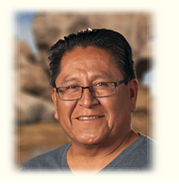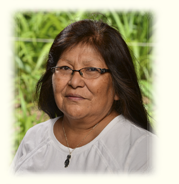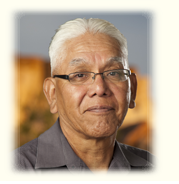Silversmiths
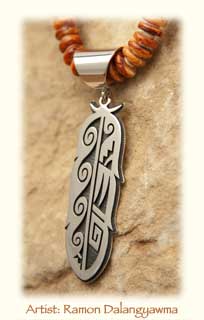
Hopi life and religion are reflected in their jewelry. Designs have a religious or secular meaning and can be highly symbolic or realistic. Designs are usually based on ancient sources such as potsherds, petroglyphs, or Katsinas.
The overlay technique is characteristic of most Hopi jewelry. The design is cut out of a flat piece of silver; the background is textured and oxidized to turn it black. Often stones such as jet, coral, or turquoise are used to add emphasis to the outstanding silvercraft produced by the Hopi.
To insure authenticity, Hopi jewelry is marked by the artist's clan, signature, or village. The Hopi Arts and Crafts Silvercraft Cooperative Guild located on Second Mesa is a non-profit membership organization that helps members promote their arts and crafts. 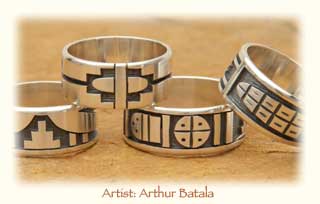 The Guild has been instrumental in training individuals who now sell their own work in private shops located throughout the mesas. Jewelry sold through the Guild is marked with the sun symbol and the clan mark of the individual artist. Further information can be obtained by contacting this organization.
The Guild has been instrumental in training individuals who now sell their own work in private shops located throughout the mesas. Jewelry sold through the Guild is marked with the sun symbol and the clan mark of the individual artist. Further information can be obtained by contacting this organization.
Arthur Batala
| Third Mesa |
| Bacavi Village |
| Coyote Clan |
| Jewelry |
Art was raised at his home village of Mishongnovi at Second Mesa and is of the Coyote Clan. He now resides in Bacavi.
In the late 70’s, the Hopi Crafts Gallery in Kyotsmovi gave him an opportunity to practice and learn the art of Hopi Overlay Jewelry. He credits the late Glenn Lucas as one who taught him much of what he incorporates into his own style of jewelry.
This distinctive form of Hopi silver overlay is often called the “traditional style”. Its primary elements consist of clean, precise cutting of the silver, and completion with a satin finish. This is done by polishing with steel wool to give the pieces a soft, warm look.
The design elements he uses can be inspired by land and cloud formations. Foremost are images of plants and plant life, inspired by working in the cornfields during the hot summer months. Animals and Hopi ceremonial life are natural parts of this life view. The philosophy of Hopi teachings learned in his kiva adds a personal meaning to make all of these elements work together. Each piece at its completion is a unique expression combining ancient teachings with modern methods that tells a story.
Art seldom uses stone in his work, but has incorporated semi-precious stone and gold into commissioned work.
His hallmark is the head of a coyote with "AB" at the nape of the neck.
(928) 734-2201 |
This email address is being protected from spambots. You need JavaScript enabled to view it. |
P.O. Box 802Hotevilla, AZ, 86030 |
Fernanda Lomayestewa
Second Mesa |
Bacavi Village |
Bamboo Clan |
Silversmith |
(928) 205-9656 |
P.O. Box 205Second Mesa, AZ 86043 |
Duane Tawahongva
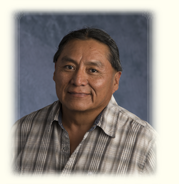
Second Mesa
Mishongnovi Village
Jewelry
Primary Number: (928) 737-9359
Secondary Number: (928) 853-3779
P.O. Box 540, Second Mesa, AZ 86043
This email address is being protected from spambots. You need JavaScript enabled to view it. • www.duanetawahongva.com
A member of the Coyote Clan, Duane Tawahongva was born at Second Mesa on the Hopi Reservation and lives today in Mishongnovi Village. Duane’s trailer studio sits on the high bluffs of Mishongnovi, with a 100-mile view of the eternal desert valley below, giving him a view all the way to the peaks of the San Francisco Mountains.
Duane is a self-taught silversmith, working in traditional Hopi silver overlay. Duane’s work incorporates hundreds of designs, including very traditional Hopi designs such as prayer feathers, clan symbols, corn maidens, water waves, and rain clouds. Duane also dabbles in special order contemporary designs such as unicorns, dolphins, and mermaids. Some of Duane’s work also incorporates semi-precious stones including coral, azurite, and natural Australian opal.
Over the last several years, Duane has worked at creating several designs based on Hopi spirituality, designs which are uniquely his own. These designs include his “three generations” and his petroglyph designs which are inspired by Dawa-Ki on ancestral Hopi Lands.
Duane draws his inspiration from the beauty of Hopi Lands and from Hopi spiritual beliefs. Like all Pueblo peoples, his prayers always include prayers for the world and for other peoples before his prayers for the Hopi People and himself. His sincere hope is that his jewelry brings blessings and serenity to all who wear it.
Duane is the recipient of numerous awards including Judge’s Choice at the University of San Diego Show in 2003; Best of Division at the American Indian Art Festival and Market (Dallas, Texas) in 2003; and Best in Division at the Southwest Native American Promotions Show (Fountain Hills, Arizona) in 2002.
Jewelry

Hopi life and religion are reflected in their jewelry. Designs have a religious or secular meaning and can be highly symbolic or realistic. Designs are usually based on ancient sources such as potsherds, petroglyphs, or Katsinas.
The overlay technique is characteristic of most Hopi jewelry. The design is cut out of a flat piece of silver; the background is textured and oxidized to turn it black. Often stones such as jet, coral, or turquoise are used to add emphasis to the outstanding silvercraft produced by the Hopi.
To insure authenticity, Hopi jewelry is marked by the artist's clan, signature, or village. The Hopi Arts and Crafts Silvercraft Cooperative Guild located on Second Mesa is a non-profit membership organization that helps members promote their arts and crafts.  The Guild has been instrumental in training individuals who now sell their own work in private shops located throughout the mesas. Jewelry sold through the Guild is marked with the sun symbol and the clan mark of the individual artist. Further information can be obtained by contacting this organization.
The Guild has been instrumental in training individuals who now sell their own work in private shops located throughout the mesas. Jewelry sold through the Guild is marked with the sun symbol and the clan mark of the individual artist. Further information can be obtained by contacting this organization.
Marcus Coochwikvia
Second Mesa |
Mishongnovi Village |
Bear Clan |
Jewelry |
My name is Marcus Coochwikvia, from the village of Mishongnovi, I am from the Bear Clan. I started making jewelry at Hopi Crafts in 1973. I learned this from my brother-in-law Glenn Lucas. I started there as a janitor first, a month later, I started making small pieces, like post earrings, & pendants. Later on I started making chains, bolo tips, and bolo cords. I worked at Hopi crafts for about ten years and moved to Hopi Guild for two years. That's where I met Roy Talahaftewa, we learned a lot from each other, from there I started on my own, I like being on my own, my own boss.
Hopi winner at 2009 Santa Fe Indian Market. Marcus Coochwikvia; first place for his coordinated overlay jewelry set. Mr. Coochwikvia is an award winning silversmith who was taught his craft by Glen Lucas and Hopicrafts.
(928) 380-6930 |
PO Box 682Second Mesa, AZ, 86043 |
Roy Talahaftewa
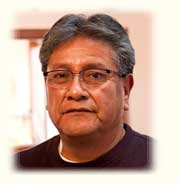
Second Mesa
Bacavi Village
Silversmith
(928) 734-9262
P.O. Box 25, Second Mesa, AZ 86043
Many people throughout the world practice many different forms of art. Forms of art may be foreign to a person, but some forms of art may be part of their very own culture. Wally Grover, Hopi/Tewa, from Polacca, Arizona practices a form of art native to his culture. He is a self-employed kachina doll/sculpture carver and provides for his family with his creative work.
Wally was introduced to this form of art when he was eighteen years old by his brother-in-law, Marlon Huma whom is also a well-known kachina doll carver. Wally carves using the roots of a cottonwood tree. His tools consist of a pocketknife, coping saw, wood burner, sandpaper, paintbrushes, linseed oil and acrylic paint.
Wally has attended many Native American art shows throughout Arizona.
Ramon Dalangyawma
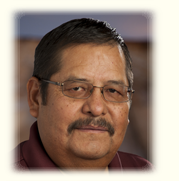
Third Mesa
Hotevilla Village
Jewelry
Phone: (928) 401-0453
Cell: (928) 734-0333
P.O. Box 183 Hotevilla, AZ 86030
This email address is being protected from spambots. You need JavaScript enabled to view it.
Ramon moved from the pueblo to study at the IAIA school in Santa Fe for two years, transferring to Phoenix Indian High School high school, where he graduated in 1972. After high school, he enlisted in the Marine Corps. He was promoted from Private to Corporal taking his training at the Communications school in Twenty Nine Palms, California. He says that President Nixon is his "big hero" because it was his decision to begin the withdrawal of troops from Viet Nam that kept him from being shipped overseas as a Field Radio Operator. Ramon completed a 12 month tour on Okinawa, in the pacific, and after the military, he worked for a short time with the Bureau of Indian Affairs in Tuba City.
Ramon returned to Hotevilla in 1978 and began Silver work at the Hopi Arts and Crafts center. Working in copper, brass, and bronze, he signed his earliest work with stylized initials RA. (Ramon Albert) Many of Ramon's works went unsold because they lacked a distinguishable Hopi surname. Like his father before him, Ramon was named after the son of Lorenzo Hubbell, who owned and operated the New Oraibi Trading Post. His grandmother gave Ramon Albert, Jr. the Hopi name Dalangyawma, which he has adopted as his hallmark. Ramon sells most of his jewelry at Indian art and craft fairs.
Ramon's designs often reflect his Hopi culture. Designs such as clouds, thunderbolts, and rain reflect the importance of weather in an area where there is no irrigation. Clan symbols, such as the bear, spider, and antelope, mixed with prayer feathers, kachinas, Kokopelli and corn are all combined in Ramon's work. Ramon dislikes doing the smaller pieces not because of limited space for his hallmark, but because holding and cutting small pieces of silver is difficult and tedious. He prefers to work on larger items.
Lucion Koinva

Second Mesa
Shungopavii Village
Jewelry
P.O. Box 312, Second Mesa, AZ 86043
This email address is being protected from spambots. You need JavaScript enabled to view it.
Loren Qumawunu

Second Mesa
Sungopavi Village
Jewelry
Primary Number: (928) 737-0274
Secondary Number: (928) 613-7281
P.O. Box 484, Second Mesa, AZ 86043
This email address is being protected from spambots. You need JavaScript enabled to view it.







